Search Images
Browse Content (p. 1717)
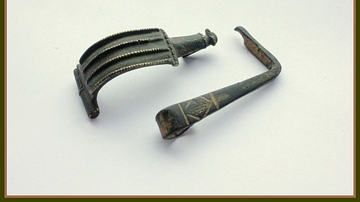
Image
Fibula and key.
Roman aucissa derivative brooch and a simple key with a single tooth. Possibly 1st century CE. Provenance: unknown. (Private collection).

Image
Piraeus & The Long Walls
An illustration of the Long Walls fortifications which connected the city of Athens to its port of Piraeus from the 5th century BCE.
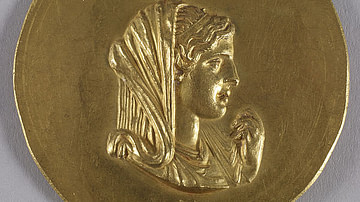
Image
Olympias
A Roman gold medallion depicting Olympias, mother of Alexander the Great. Early 3rd century CE. (Walters Art Museum).
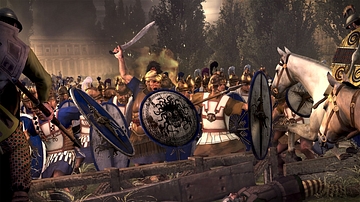
Image
Athenian Hoplites
A 3D representation of Athenian hoplites in battle. The Gorgon device on the central figure's shield was a typical feature of Greek shield design. In Greek mythology the stare of the Gorgon Medusa was said to turn people to stone.
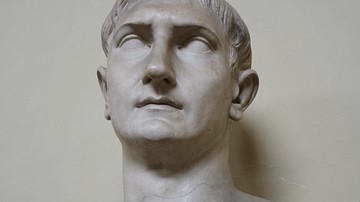
Image
Trajan Bust, Vatican Museums
A bust of Roman emperor Trajan (r. 98-117 CE). The portrait is idealised and was produced in the reign of his successor Hadrian in 117 CE. Provenance: Ostia. (Vatican Museums, Rome).
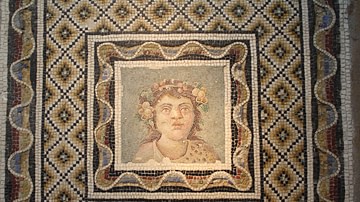
Image
Roman Bacchus Floor Mosaic
A 3rd century CE Roman floor mosaic depicting Bacchus, god of wine. From via Flaminia, Rome. (Palazzo Massimo, Rome).
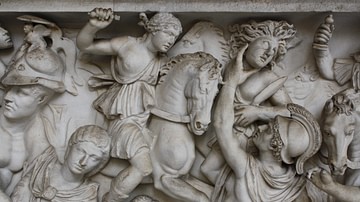
Image
Penthesilea & Achilles
A detail from a 3rd century CE Roman sarcophagus showing the amazon Penthesilea and the Greek hero Achilles in a scene from the Trojan War. Achilles was said to have fallen in love with the amazon at the very moment he killed her with his...
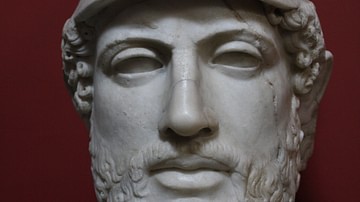
Image
Pericles
A 1st century CE bust of the Athenian statesman Pericles probably from a 5th century BCE original bronze. Provenance: Rome. (Vatican Museums, Rome).

Image
Head of Zeus, Artemesium Bronze
A detail of the Artemesium bronze believed to represent Zeus (or Poseidon), 460 BCE. (National Archaeological Museum, Athens).
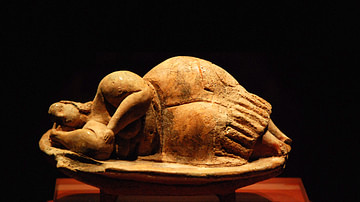
Image
The Sleeping Lady
Temple Period, 4000 - 2500 BCE. This clay figure of a reclining lady was found in one of the pits of the Hypogeum in Hal Saflieni in Malta. It has traces of red ochre paint and is thought to represent a "mother goddess", even though she may...